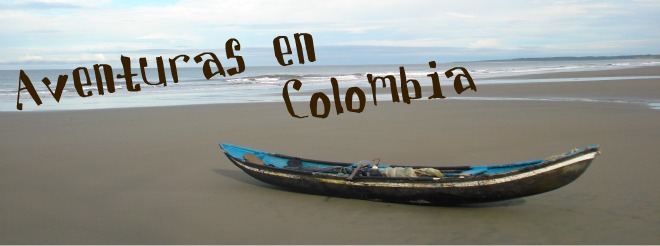I received a message from a friend after my last post commenting that she was interested in hearing more about my day-to-day existence in Colombia. What about life is different? This question struck me as I used to think
everything was different! Different language, different money, different fruits (lulo juice, anyone?), different cars (test drive a Renault 6 lately?), different salutationary customs (kiss, kiss), different daylight...and on and on. I started to think, as I made my way through my daily routines, what still occasionally strikes me as "different" that I take for granted, nonetheless.
- Come and stay at my house and one of the first things you will notice is the man on a bike riding slow laps up and down my block, a machete dangling from his belt. My vigilante is paid by the residents of our street to keep watch over the neighborhood. Ironically, I don't really know my street's vigilante as well as I know the vigilantes of the connecting streets. It is initially disarning to be walking home in the evening and be suddenly aware of a man standing in the shadows of a tree or patio wall, watching as you make your way down the road. Thankfully, its like having various armed escorts ensuring your safe passage to your house.
 |
| Pico y Placa street banner |
|
- The general infrastructure of Cali is terrible. There are no highways or biways in the city, just several "major roads" that, at times, allow cars to drive at accelerated speeds. Therefore, in a city of over 2 million, this causes many traffic problems. As a way to combat this, Cali practices what is known as "Pico y Placa," literally "peak and plate," referring to the peak traffic hours and the license plates of the vehicles. Depending on numbers beginning the license plate, certain cars are prohibited from being on the road during rush hours. For example, Mondays people with a license plate beginning with "1" or "2" will be ticketed if they are caught driving between designated times. The rest of the week they are fine to drive whenever, as other cars will be legally kept off the road. Interestingly enough, this is the one traffic violation that is ardently enforced. People will literally pull off the road and sit in their cars rather than drive the rest of the way home if they happen to be caught en route when pico y placa hits.
- As much as the aforementioned infrastructure of Cali is a mess, the city has taken great strides in implimenting a new bussing system known as the Mio. It works much like an above-ground subway with stations, set unnegotiable routes, and swipe cards; no cash is exchanged with the drivers and there are no surprises along the way. However, one anomaly that I can not quite wrap my head around is how people wait for the bus. Hop on the Metro in Paris, the "L" in Chicago, or the train in New York and you will see people patiently waiting for their train, far away from the tracks. In the Mio stations people crowd close together directly in front of the sliding glass doors that will glide open upon the arrival of the next bus. The problem is that multiple routes come through the stations, so, when your particular bus arrives and you step forward from the back wall of the station - because that is a normal place to wait - you end up physically pushing and clawing your way through this mass of humanity that are waiting for some future bus, not the one that will soon be closing it's doors. To make things worse, they look at you as if you are inconveniencing them.
- Telephone etiquette or protocal is another cultural norm that will always seem strange to me. Its is as if there are different rules. Rule number one is simple: never leave a message. If the person you are attempting to get in contact with does not answer it could not possibly mean they are busy, it simply means you should call back repeatedly until they answer. A subclause for this rule is to do this as many times as it takes to elicit a response. Rule number two pairs nicely with the former: there is never an inappropriate place to answer your phone and have a full conversation. The movie theatre, a faculty work meeting, a parent/teacher conference, the crowed bus; these are all perfectly acceptable places to chat. It is important to know, however, that should you answer your phone in a public place, it is respectful to just cup your hand over the receiver and, if possible, duck under the table; lowering you voice is not necessary. The third and final rule is that if someone you don't know calls you, they can begin the conversation by asking you who they are speaking with. Don't try returning the question as that information is not privy to you.
While some cultural nuances are now so commonplace to me that they have been adopted as a part of my behavior or psyche, others will continually cause me to scratch my head in wonderment. Seriously, though, talk on your phone in the movie, spy on me from the shadows of my own street, but don't try and make me miss my bus; there will be elbows thrown before that happens.

